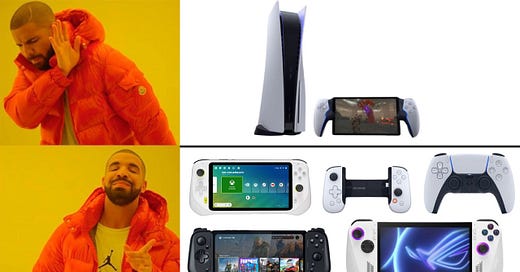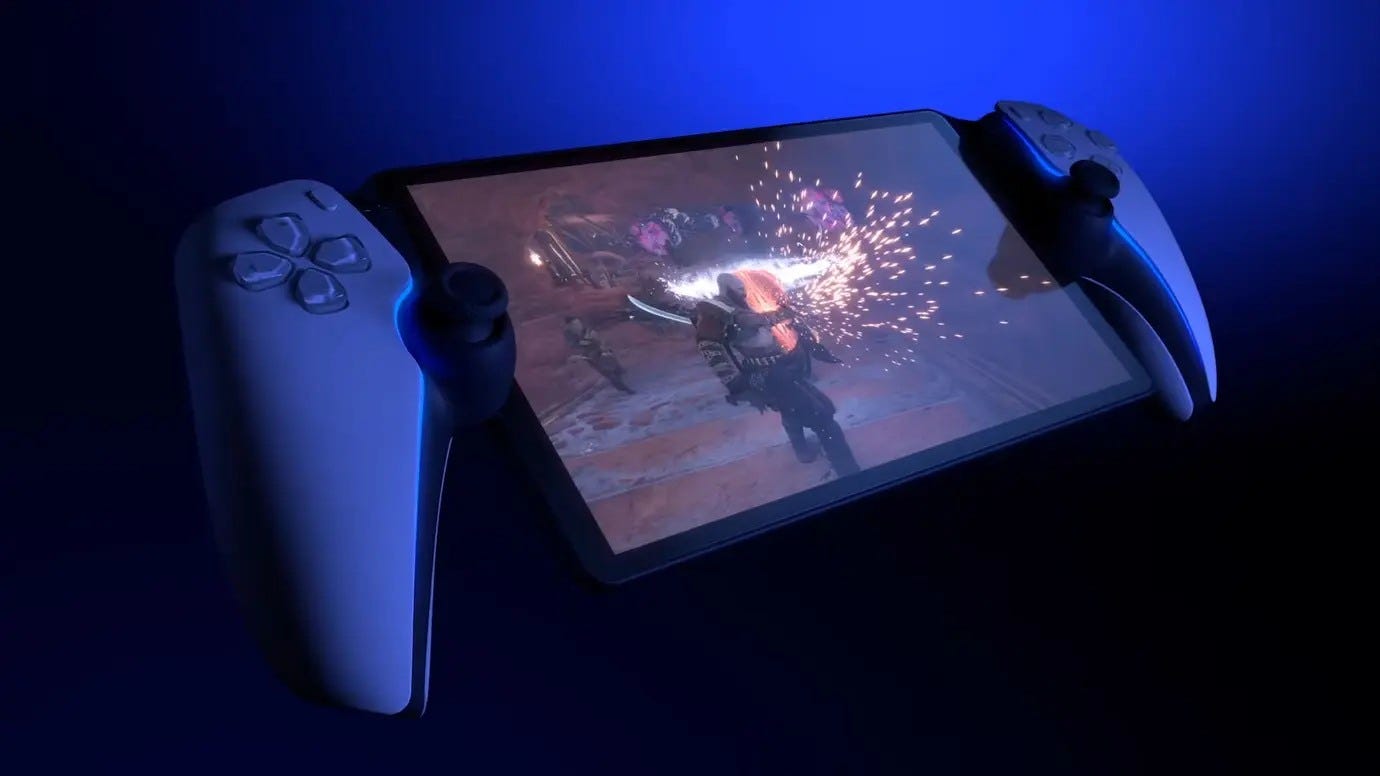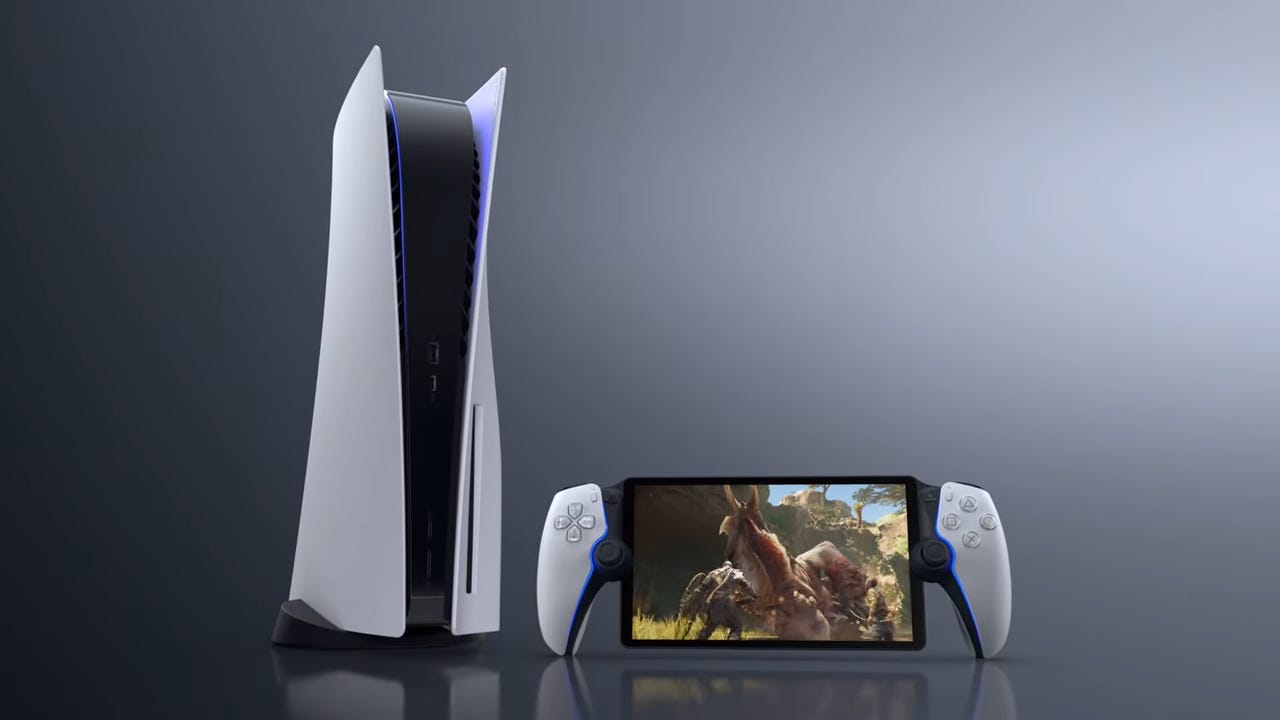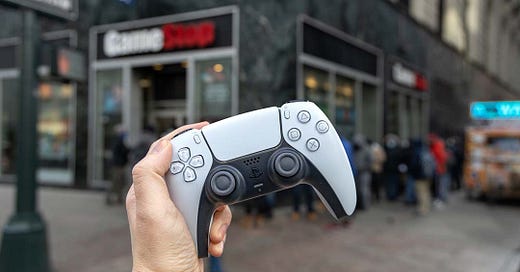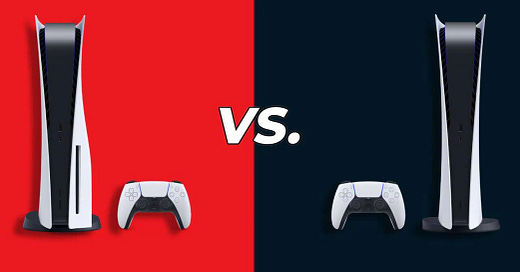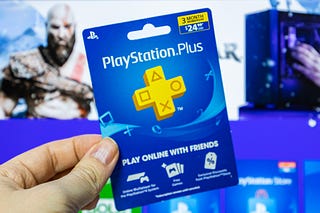
Don't buy the Sony Project Q PS5 handheld – buy these devices instead
Sony's PS5 handheld is one of the strangest devices I've seen in quite some time
Now that the dust has settled on a fairly disappointing PlayStation Showcase, I still can’t get my head around the Sony Project Q PS5 handheld that Sony announced towards the tail end of its lackluster hour-long presentation. Seriously, what the heck is that thing?
To the untrained eye, it looks like Sony wedged an 8-inch screen in between a DualSense controller that’s been sawed in half and called it a day. And, hilariously, that’s exactly what they did.
I’ve made more compelling creations using Link’s Ultrahand ability in Tears of the Kingdom than this monstrosity, but maybe further analysis will make the Sony Project Q seem more appealing and justify its rumored $199 to $299 price point.
Dumb design
Let’s address the first issue that I’ve briefly touched on: Project Q’s comical design. The PlayStation Project Q handheld makes the Wii U GamePad look like an incredible feat of engineering, so much so that everyone owes Nintendo an apology for all those Fisher-Price memes people made about it.
The design of Project Q verges on lazy, and it honestly feels like Sony made it out of spite – almost as a way of making sure any PSP or PS Vita fans let go of the faintest hopes that Sony will ever make a native gaming handheld device again. This is what you get instead, and you’ll like it.
Even though I’ve stared at the PlayStation Project Q with a mixture of disbelief and second-hand embarrassment for a while now, I still can’t tell if this Frankenstein-like handheld will be comfortable to hold.
I’m a massive fan of the DualSense controller, but placing a giant screen slap bang in the middle seems like a recipe for disaster when it comes to ergonomics, weight distribution, and – the DualSense’s Achilles heel – battery life. The PS5 controller battery life is already subpar and there’s no guarantee Project Q will fix that issue. Remember, the PS5 DualSense Edge controller costs $199 and has worse battery life than Sony’s $70 pad.
The way the 1080p LCD screen (yeah, it’s not an OLED) runs the length of the controller grips instead of being nestled slightly higher up just makes the whole thing look unwieldy and awkward to hold. It also looks like a simple twist mid-game would snap it in half, too, which I’m sure will delight any parents looking to buy this PS5 accessory for their child. (Check out the best PS5 accessories instead.)

I’m also concerned by how the analog sticks are so close to the screen itself. There’s a good chance my big thumbs will end up obstructing some screen real estate – or worse – actually touching it. The Sony Project Q handheld doesn’t have a touchscreen, though, which at least removes the fear of accidentally interrupting my progress mid-game.
And let’s go back to the issue of weight. The DualSense controller is already 281 grams, though Project Q removes the controller’s touchpad and lightbar. The Nintendo Switch screen that houses an entire console is 297 grams, and the Joy-Con controllers weigh about 50 grams each. Even though this is only a handheld that streams games, there’s a good chance it could weigh the same as Nintendo’s console, if not more, which doesn’t really make sense.
Know what you’re buying
Speaking of streaming, it’s important to repeatedly stress that Project Q isn’t a portable PS5. You can’t run anything natively on this device – you can only stream compatible Remote Play games at 1080p. Remote Play has been around since the PS3 days, and even though it’s improved incrementally over time, it’s not the killer feature it should be.
Latency is still an issue, as is picture quality and performance. Like Xbox Cloud Gaming, your experience will vary depending on your internet speed, but at least Microsoft’s solution can be played anywhere with Wi-Fi and a data connection. You’re strictly at the mercy of Wi-Fi with Project Q.
You’re also stuck with many of the irritations of traditional console gaming that cloud gaming removes. Games will need to be installed on your PS5 console before they can be played, as will updates. And if you’re ever used Remote Play on PS5 in the past, sometimes it won’t work if you have a game suspended or if a title isn’t compatible. Not every game is.
Cloud gaming at least lets you play a large selection of games instantly, removing the common stumbling block of waiting for an update or installation. You can also play games at higher refresh rates on some devices, besting the 60Hz limitation the Project Q has. It means all those PS5 120fps games will be held back as a result. Bummer.
Does the Q stand for Questionable?
The core appeal of Project Q is basically being able to enjoy the features of the DualSense when playing PS5 games away from the TV. Currently, other controllers can’t replicate the haptic feedback or adaptive triggers that the DualSense offers, and while I absolutely love what they add to the experience when playing the best PS5 games, there’s no way I’d buy this just for some finger-tingling fun.
It’s worth reiterating that Sony’s Project Q handheld has been made with one purpose in mind: PS5 Remote Play. There are other handheld devices out that not only offer Remote Play with PS5 but also Xbox Cloud Gaming and Nvidia GeForce Now, as well as more functionality including better specs.
The Razer Edge and Logitech G Cloud give you access to far more games than the PlayStation Project Q ever will and also won’t look completely ridiculous when used in a public setting. You could opt for Valve’s Steam Deck or the Asus ROG Ally, too, which will give you a portable PC on the go and streaming capabilities.
There’s also the Backbone One PlayStation Edition for iOS and Android devices, which Sony announced on the day of the PlayStation Showcase. It’s far more convenient than Sony’s Project Q and works with other mobile games like Call of Duty: Mobile.
Let’s not ignore the fact you can simply use your existing DualSense to connect to a PC, tablet, or smartphone, too. That’s what I do, and I’ve never found myself longing for the DualSense features as the experience is compromised anyway.
Of course, there’s a slim chance that the PS5 handheld – though it’s rather misleading to call it that – will find an audience. The price will obviously be a huge factor, but even if it launches for $199, there’s no way I can recommend this with a clear conscience. I’d strongly recommend buying any of the devices listed above over Sony’s obscure offering. Or get a Nintendo Switch so you can play Tears of the Kingdom…

